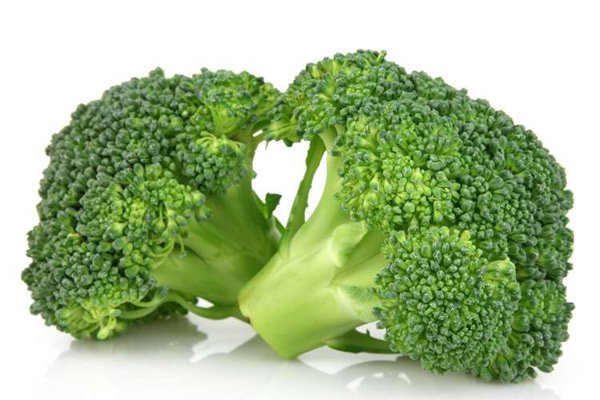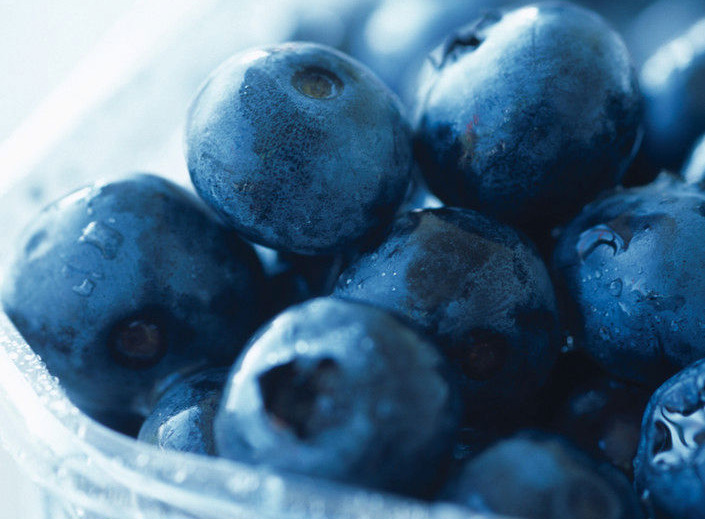5-A-Day - Eat the Rainbow! August 2019
Benefits of Eating the Rainbow
One of the easiest ways to make sure your body gets all of the nutrients it requires is to eat fruits and vegetables in the full spectrum of colors. Nature has its own "color-coding" system, with different compounds creating different hues in our foods. Below are some examples of foods in various colors and their benefits.
Red
 Red fruits and vegetables are colored by natural plant pigments called "lycopene" or "anthocyanins." Lycopene in tomatoes, watermelon and pink grapefruit, for example, may help reduce risk of several types of cancer, especially prostate cancer. Lycopene in foods containing cooked tomatoes, such as spaghetti sauce, and a small amount of fat are absorbed better than lycopene from raw tomatoes.
Red fruits and vegetables are colored by natural plant pigments called "lycopene" or "anthocyanins." Lycopene in tomatoes, watermelon and pink grapefruit, for example, may help reduce risk of several types of cancer, especially prostate cancer. Lycopene in foods containing cooked tomatoes, such as spaghetti sauce, and a small amount of fat are absorbed better than lycopene from raw tomatoes.
Anthocyanin's in strawberries, raspberries, red grapes and other fruits and vegetables act as powerful antioxidants that protect cells from damage. Antioxidants are linked with keeping our hearts healthy, too.
Orange/Yellow
 Orange/yellow fruits and vegetables are usually colored by natural plant pigments called "carotenoids." Betacarotene in sweet potatoes, pumpkins and carrots is converted to vitamin A, which helps maintain healthy mucous membranes and healthy eyes. Scientists have also reported that carotenoid-rich foods can help reduce risk of cancer, heart disease and can improve immune system function.
Orange/yellow fruits and vegetables are usually colored by natural plant pigments called "carotenoids." Betacarotene in sweet potatoes, pumpkins and carrots is converted to vitamin A, which helps maintain healthy mucous membranes and healthy eyes. Scientists have also reported that carotenoid-rich foods can help reduce risk of cancer, heart disease and can improve immune system function.
One study found that people who ate a diet high in carotenoid-rich vegetables were 43 percent less likely to develop age-related macular degeneration, an eye disorder common among the elderly, which can lead to blindness.
Carotenoids also may be good for your heart. One study found that men with high cholesterol who ate plenty of vegetables high in carotenoids had a 36 percent lower chance of heart attack and death than their counterparts who shunned vegetables.
Citrus fruits like oranges are not a good source of vitamin A. They are an excellent source of vitamin C and folate, a B vitamin that helps reduce risk of birth defects.
Green
 Green fruits and vegetables are colored by natural plant pigment called "chlorophyll." Some members of the green group, including spinach and other dark leafy greens, green peppers, peas, cucumber and celery, contain lutein. Lutein works with another chemical, zeaxanthin, found in corn, red peppers, oranges, grapes and egg yolks to help keep eyes healthy. Together, these chemicals may help reduce risk of cataracts and age-related macular degeneration, which can lead to blindness if untreated.
Green fruits and vegetables are colored by natural plant pigment called "chlorophyll." Some members of the green group, including spinach and other dark leafy greens, green peppers, peas, cucumber and celery, contain lutein. Lutein works with another chemical, zeaxanthin, found in corn, red peppers, oranges, grapes and egg yolks to help keep eyes healthy. Together, these chemicals may help reduce risk of cataracts and age-related macular degeneration, which can lead to blindness if untreated.
The "indoles" in broccoli, cauliflower, cabbage and other cruciferous vegetables may help protect against some types of cancer. Leafy greens such as spinach and broccoli are excellent sources of folate, a B vitamin that helps reduce risk of birth defects.
Blue / Purple
 Blue/purple fruits and vegetables are colored by natural plant pigments called "anthocyanin's." Anthocyanin's in blueberries, grapes and raisins act as powerful antioxidants that protect cells from damage.
Blue/purple fruits and vegetables are colored by natural plant pigments called "anthocyanin's." Anthocyanin's in blueberries, grapes and raisins act as powerful antioxidants that protect cells from damage.
They may help reduce risk of cancer, stroke and heart disease. Other studies have shown that eating more blueberries is linked with improved memory function and healthy aging.
White
 White fruits and vegetables are colored by pigments called "anthoxanthins." They may contain health-promoting chemicals such as allicin, which may help lower cholesterol and blood pressure and may help reduce risk of stomach cancer and heart disease. Some members of the white group, such as bananas and potatoes, are good sources of the mineral potassium, too.
White fruits and vegetables are colored by pigments called "anthoxanthins." They may contain health-promoting chemicals such as allicin, which may help lower cholesterol and blood pressure and may help reduce risk of stomach cancer and heart disease. Some members of the white group, such as bananas and potatoes, are good sources of the mineral potassium, too.
